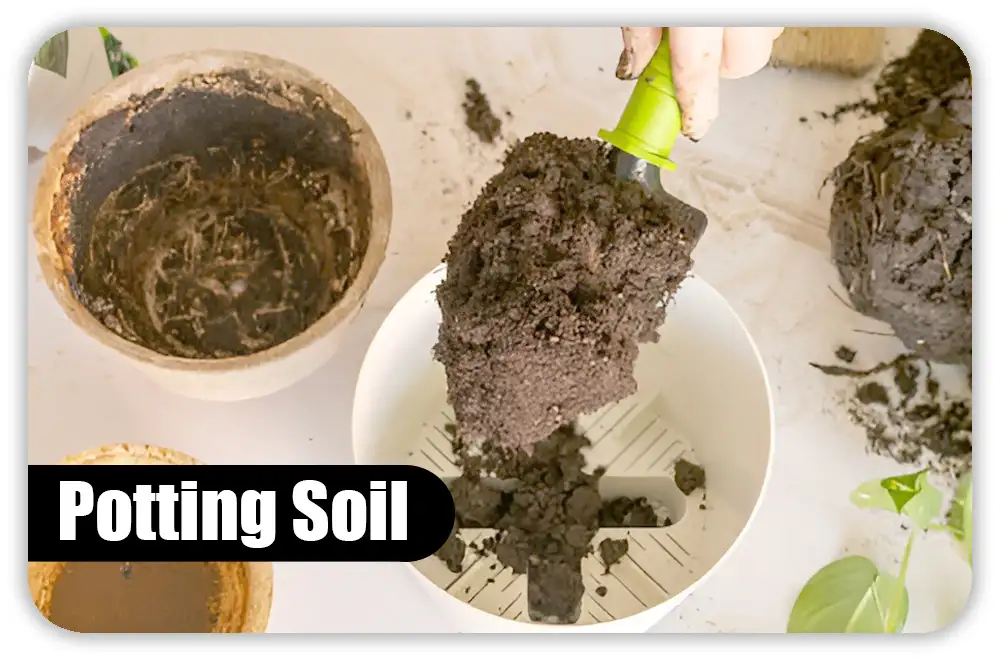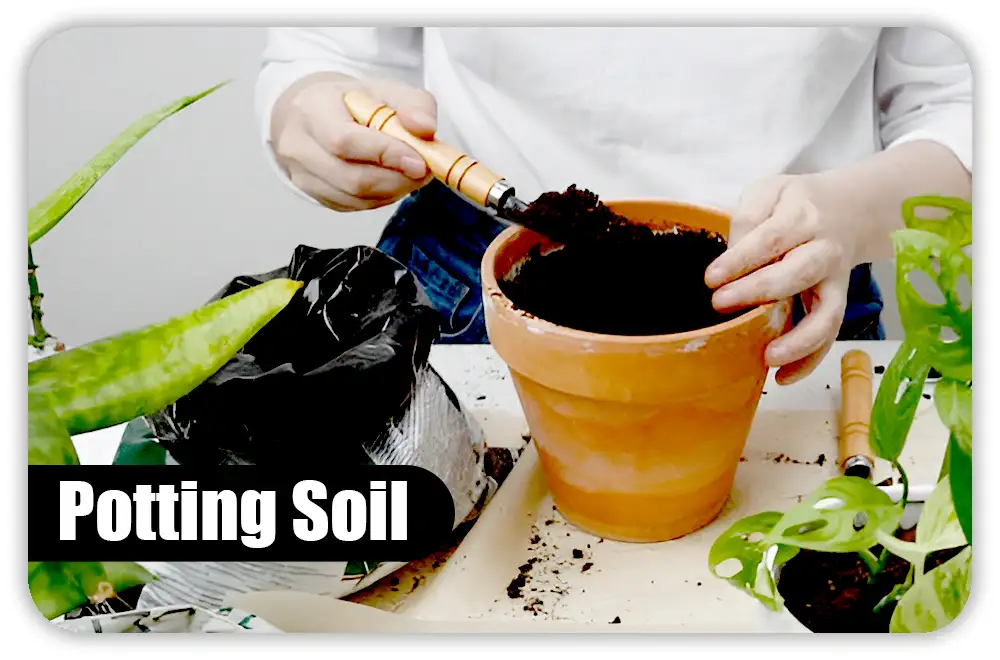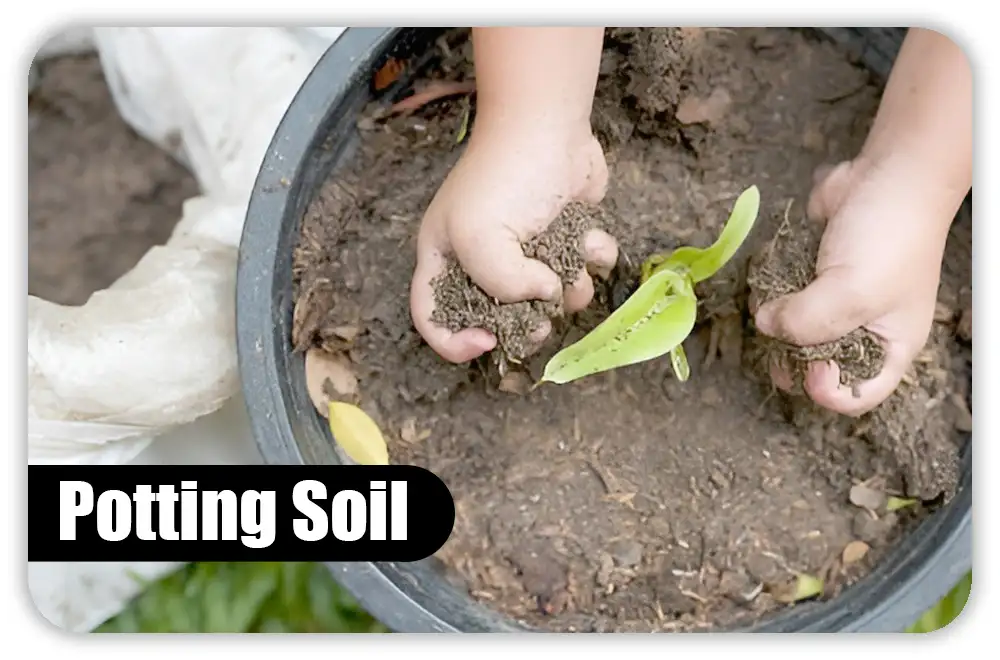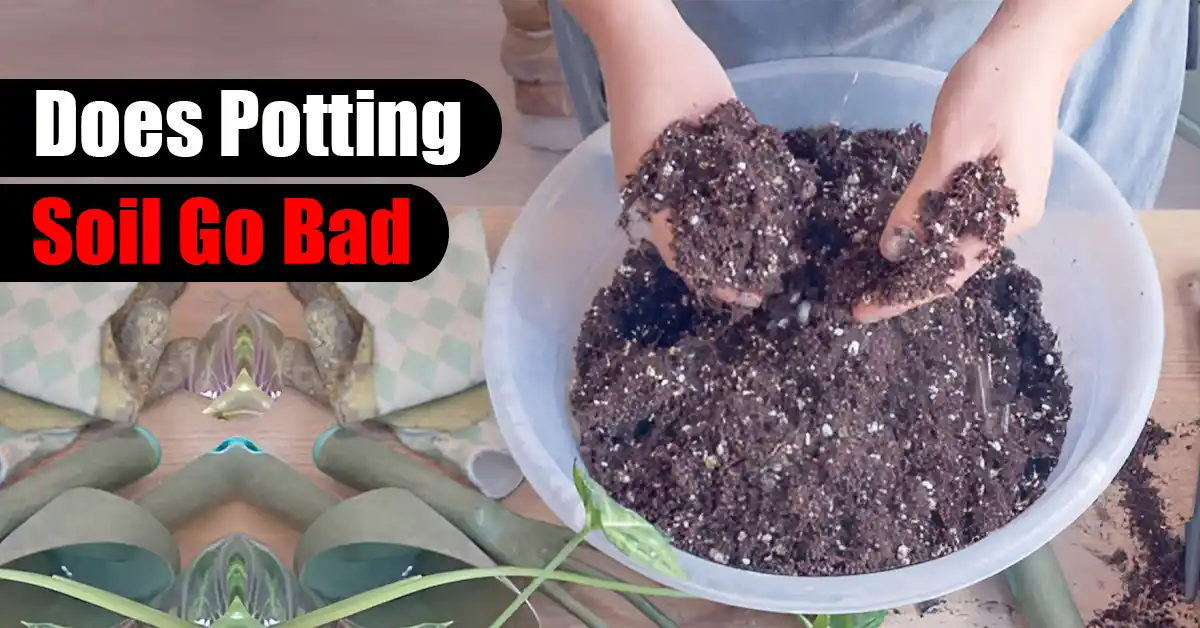Ever opened a bag of old potting soil and wondered if it’s still good? I’ve been there too. I once found a dry, clumpy mix with a strange smell and didn’t know what to do.
The good news? Potting soil doesn’t rot like food. But over time, it can lose nutrients, structure, and life. After years of container gardening, I’ve learned how to spot soil that’s still usable—and how to fix tired soil fast.
In this guide, I’ll show you how to check your soil and what to do if it’s past its prime.
Table of Contents
What Is Potting Soil, Really? (And Why It’s Not “Just Dirt”)
When I first started gardening, I thought potting soil was just fancy dirt in a bag. I was wrong. It’s not like the soil in your yard at all.
Potting soil is made for plants in pots. It’s light, drains well, and gives roots room to grow and breathe.
Most mixes include peat moss or coconut coir to hold water. They also have perlite or pumice for airflow. You’ll find some compost too—for nutrients—and often a bit of slow-release fertilizer.
Some fancy blends even add worm castings or helpful microbes.
But here’s the thing: even if you leave the bag sealed in your garage, the mix won’t stay fresh forever. The ingredients break down over time, especially peat and compost. That’s when changes start—and problems can begin.
So, Does Potting Soil Go Bad?
Let’s get to the point—does potting soil go bad? It doesn’t expire like milk, but yes, it can go bad.

I’ve seen this after winter when I reuse old soil. It feels heavy, smells strange, and plants don’t grow well in it.
Here’s what happens:
- It compacts. The loose texture breaks down, and air pockets disappear.
- It loses nutrients. Watering and time drain the goodness away.
- It can grow mold. If you store it damp in a warm place, bad microbes might grow.
In the U.S., many people keep soil in garages or sheds. If your area has hot summers or wet winters, that can speed up the damage.
How to Tell If Potting Soil Has Gone Bad
Use Your Senses—Look, Smell, and Touch
I’ve learned to trust my gut—and my nose. If the mix smells weird, it probably is.
Here’s what to check:
- Bad smell: A musty or rotten scent means low oxygen. Not good for roots.
- Mold or mushrooms: These grow when soil stays wet for too long.
- White crust on top: That’s salt buildup from fertilizer.
- Hard or clumpy feel: Good soil should be soft and crumbly.
Watch Your Plants
Sometimes the plants tell you more than the soil.
- Leaves turn yellow or droop.
- Growth slows or stops.
- You see fungus gnats flying around.
- Seedlings die fast—often from mold or compacted soil.
I saw all of this in my garden last spring. That’s when I knew: I had to fix the soil or start over.
Is Old Potting Soil Still Usable?
So, does potting soil go bad forever? Not really.

Most old soil can be reused with a few quick fixes. If it’s been sitting for a while, it may be low on nutrients or packed tight. But that doesn’t mean you need to toss it.
I’ve used soil from my tomato pots in new flower containers. I just freshened it up first. If it smells fine and looks okay, it still has life.
But here’s when I don’t reuse it:
- The plant died from root rot or disease.
- The soil smells awful, even after airing out.
- It’s full of mold from sitting wet too long.
In those cases, I throw it out—or compost it far from my veggie beds.
But if the soil is just tired, don’t worry. You can bring it back. I’ll show you how.
How to Rejuvenate Old Potting Soil (Step-by-Step)

Step 1 – Remove Old Roots and Debris
Start by digging through the soil. Pull out old roots, stems, and mushy bits. I compost these unless the plant was sick.
Step 2 – Add Perlite or Pumice
Old soil gets heavy. Roots need air. Mix in perlite or pumice—about 10% by volume. These help keep the mix loose and airy.
For big containers, you can also add coarse bark or small wood chips to help drain water better.
Step 3 – Add Compost for Nutrients
Now it’s time to feed the mix. Add fresh compost. I use about 1 part compost to 3 parts soil. It boosts nutrients and brings good microbes back.
Make sure the mix smells rich and earthy.
Step 4 – Use the 50/50 Rule (Optional)
If your old soil feels very tired, mix it with new soil. Use half old and half fresh. It’s a great way to stretch your supplies and still grow healthy plants.
I’ve done this for herbs and flowers—and it works great.
Step 5 – Flush Out Salt
See white crusts on top? That’s salt. If your plants look stressed, salt may be the cause. Put the soil in a pot with holes and flush it with clean water—3 to 4 times the soil volume.
Tip for U.S. gardeners: If your tap water is hard, salt builds up faster. Use rainwater or distilled water to flush when you can.
How to Store Potting Soil Properly (So It Doesn’t Go Bad)
Soil can go bad if you store it the wrong way. If it stays wet, it molds. If it gets too dry or hot, it breaks down.
Here’s how I store mine:
- Use sealed containers: I store soil in plastic bins with tight lids. Buckets work too. This keeps bugs, moisture, and weeds out.
- Pick a cool, dry spot: I like a shady corner in the garage. Stay away from hot sheds or sunlit spots—heat breaks soil down fast.
- Keep it off the floor: In damp areas, concrete pulls in moisture. I set bags on a shelf or pallet to keep them dry.
When to Toss It—Knowing When Soil Is Beyond Saving
Sometimes, no matter what you do, old potting soil can’t be saved. I’ve learned this the hard way—trying to reuse moldy soil and losing my plants again.
Here’s when I throw it out:
- The plant was sick. If the plant had root rot, wilt, or blight, the soil may still carry disease. That’s risky—especially for veggies like tomatoes.
- It smells bad. A sour, rotten smell means bad microbes have taken over. Even airing it out won’t help.
- It’s slimy or soggy. Wet, swampy soil is a sign of low oxygen and harmful bacteria. That mix isn’t safe for plants.
When this happens, I bag the soil and toss it in the trash. I don’t add it to compost—especially if I think it’s infected. It’s just not worth the risk to the rest of my garden.
Creative Ways to Reuse Spent Soil
If your old soil isn’t moldy or diseased, don’t toss it. Worn-out soil can still be useful. I’ve found many smart ways to reuse it in the yard.
Here are my favorite ideas:
- Top off garden beds. I spread old soil on raised beds and mix it in. Worms and rain do the rest. It still holds water and helps with structure.
- Fill the bottom of large pots. In deep planters, I use old soil in the bottom third. Then I top it off with fresh mix. The roots stay happy, and I save on new soil.
- Boost my compost pile. If the soil is clean, I toss it into the compost with food scraps. It adds bulk and helps keep things balanced. But I skip this if the soil came from a sick plant.
- Topdress the lawn. After removing roots and clumps, I sprinkle it over bare spots on my lawn. Then I rake it in. Best to do this in spring or fall.
Some of my neighbors even use old soil to fill low spots in their yard—especially where the native soil is sandy or thin.
Conclusion: Your Potting Soil Might Be “Tired,” Not “Trash”
Potting soil doesn’t go bad in a day. It doesn’t have an end date like milk. But it does change with time.
It may get hard, lose nutrients, or grow mold if stored the wrong way. But that doesn’t mean you have to throw it out. Most of the time, you don’t.
I’ve saved many bags of old soil. I just check the smell, feel the texture, and mix in compost or perlite. With a bit of care, old soil can still grow strong, healthy plants.
Before you toss it, ask yourself:
- Does it smell okay?
- Does it look okay?
- Does it feel okay?
If yes, it likely just needs a quick refresh.
But if it’s moldy, slimy, or from a sick plant, let it go. That kind of soil can do more harm than good.
FAQs: Does Potting Soil Go Bad
Does potting soil go bad if it’s been sitting for a year?
Potting soil doesn’t expire like food, but it can break down. After a year, it may lose nutrients or structure, especially if stored in heat or moisture.
How can I tell if my potting soil has gone bad?
Check for a musty smell, mold, or white crust on top. Bad soil often feels dense and won’t hold water well—signs it may need to be replaced or refreshed.
Can I reuse old potting soil from last season?
Yes—if it’s clean and not moldy or from diseased plants. Add compost and perlite to boost nutrients and restore airflow before reusing.
Why does old potting soil smell bad?
A rotten or sour smell usually means it’s gone anaerobic. That happens when soil stays wet and lacks oxygen—bad news for plant roots.
What should I do with potting soil that’s gone bad?
If it’s moldy or from sick plants, toss it in the trash—not compost. But if it’s just tired, you can fix it by mixing in fresh compost and draining salts.

